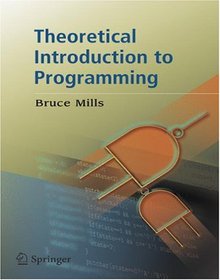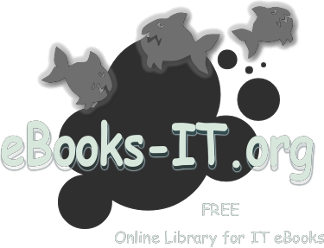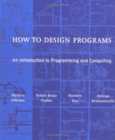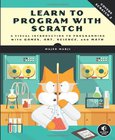Theoretical Introduction to Programming

Book Details:
| Publisher: | Springer |
| Series: | Springer |
| Author: | Bruce Mills |
| Edition: | 1 |
| ISBN-10: | 1846280214 |
| ISBN-13: | 9781846280214 |
| Pages: | 369 |
| Published: | Sep 14 2005 |
| Posted: | Nov 19 2014 |
| Language: | English |
| Book format: | |
| Book size: | 1.65 MB |
Book Description:
Including easily digested information about fundamental techniques and concepts in software construction, this book is distinct in unifying pure theory with pragmatic details. Driven by generic problems and concepts, with brief and complete illustrations from languages including C, Prolog, Java, Scheme, Haskell and HTML. This book is intended to be both a how-to handbook and easy reference guide. Discussions of principle, worked examples and exercises are presented. All concepts outside introductory programming are explained with clear demarcation and dependencies so the experienced programmer can quickly locate material. Readable in a linear manner, with short mono-thematic to encourage dipping and reference. Also included are sections on open problems in software theory and practice. While little other than a novice programmer's knowledge is explicitly assumed, a certain conceptual maturity, either through commercial programming or academic training is required each language is introduced and explained briefly as needed.
Download Link:
Related Books:
How to Design Programs
An Introduction to Programming and Computing
This introduction to programming places computer science in the core of a liberal arts education. Unlike other introductory books, it focuses on the program design process. This approach fosters a variety of skills--critical reading, analytical thinking, creative synthesis, and attention to detail--that are important for everyone, not just future computer programmers.The book exposes readers to two fundamentally new ideas. First, it presents program design guidelines that show the reader how to analyze a problem statement; how to formulate concise goals; how to make up examples; how to develop an outline of the solution, based on the analysis; how to finish the program; and how to test. Each step produces a well-defined intermediate product. Second, ...
Learn to Program with Scratch
A Visual Introduction to Programming with Games, Art, Science and Math
Scratch is a fun, free, beginner-friendly programming environment where you connect blocks of code to build programs. While most famously used to introduce kids to programming, Scratch can make computer science approachable for people of any age. Rather than type countless lines of code in a cryptic programming language, why not use colorful command blocks and cartoon sprites to create powerful scripts? In Learn to Program with Scratch, author Majed Marji uses Scratch to explain the concepts essential to solving real-world programming problems. The labeled, color-coded blocks plainly show each logical step in a given script, and with a single click, you can even test any part of your script to check your logic. You'll learn how to:Harness the power o...
An Introduction to Programming in Emacs Lisp
Emacs Lisp is a simple, complete, and powerful programming language. It is the building block of GNU Emacs, which is an integrated development environment with special features for scanning and parsing text as well as for handling multiple files and sub-processors. This book will show you: * how to set variables and write function definitions * How to use "if" and "let" * How to write "while" loops and recursive loops * how to search for a word or expression * how to customize GNU Emacs for yourself, even when it is shared on a network. * how to debug programs * and much more. This tutorial an elementary introduction to teach non-programmers how to customize their work environment; it can also be used as an introduction ...
2007 - 2021 © eBooks-IT.org



